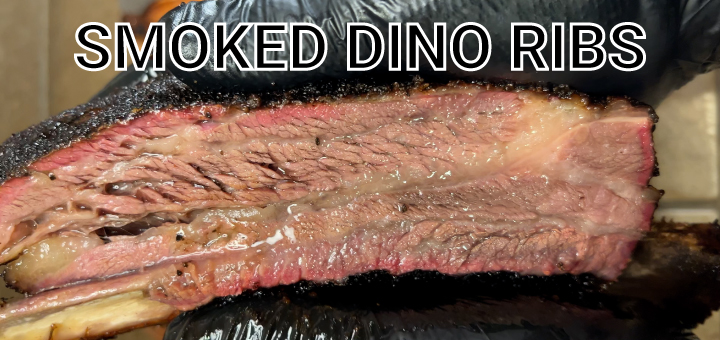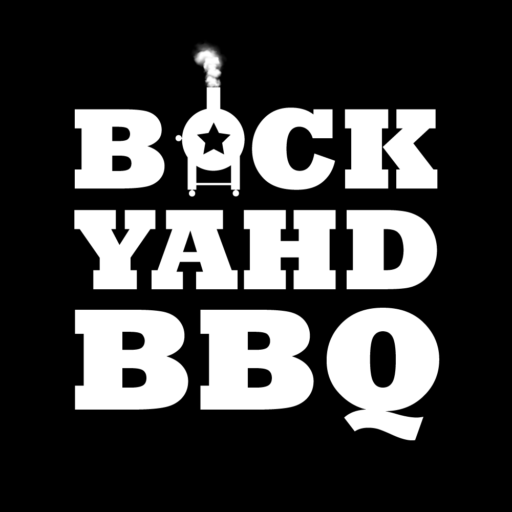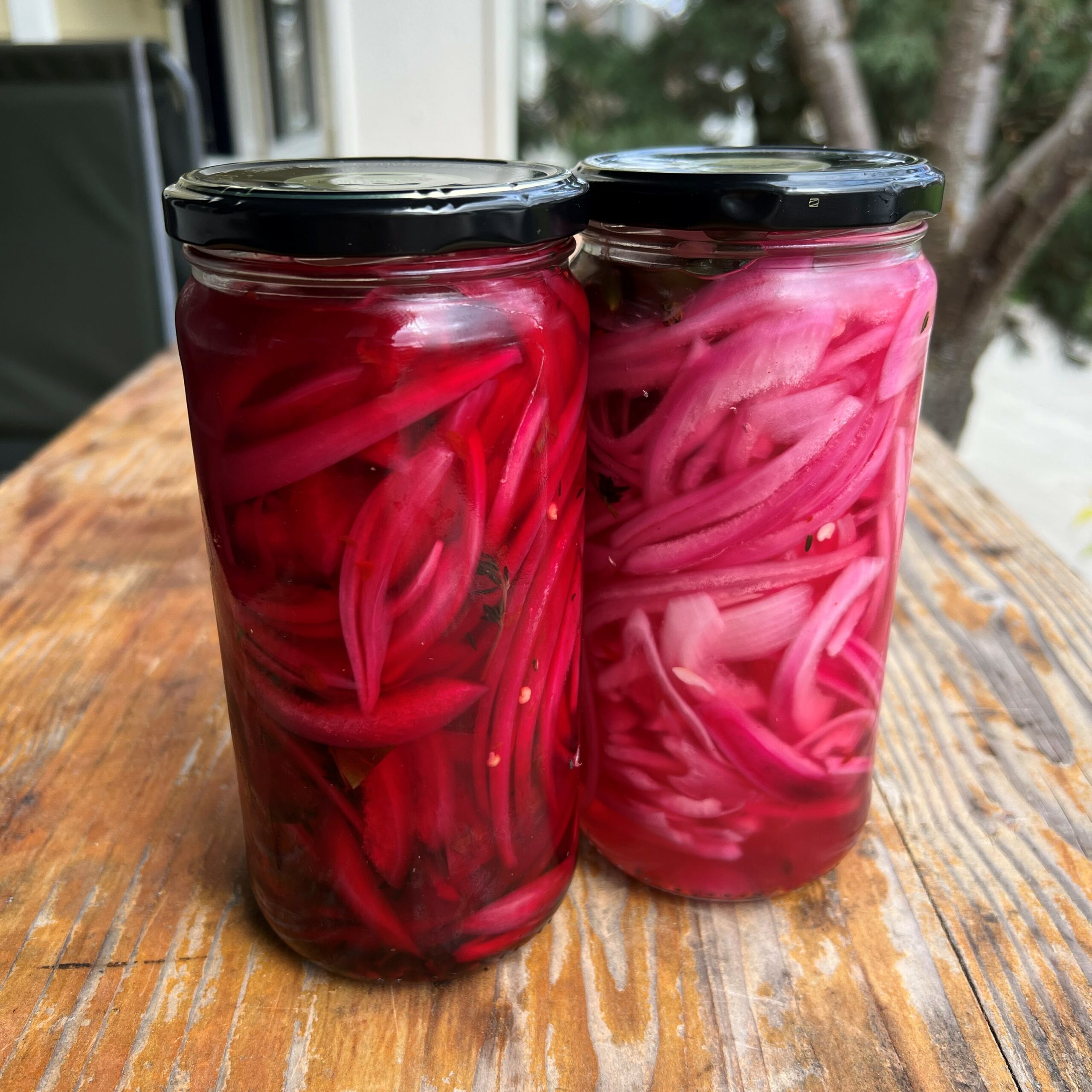How to Smoke Dino Ribs aka “Beef Ribs”

Intro
Dino ribs, also known as beef ribs, are one of the best bites in BBQ. In this post, I’m going to show you my complete beef rib process, including how they are delivered, trimmed, slathered, rubbed, smoked, wrapped, sliced and then reheated.
Delivery
I just got a couple of Dino Ribs from Porter Road and wanted to share how they are packed and shipped. The cardboard box is insulated on all 6 sides. Inside the box you’ll find a layer of frozen gel packs, then all the vac sealed meat, then another layer of gel packs. Other than the plastic wrappers, most of the material is recyclable. The meat from Porter Road ships very cold and the ground beef, sausages, or larger roasts are frozen. Before my first order over a year ago, I didn’t think it would still be cold after a few days in shipment, but I’ve never had an issue. In general, you’ll want to consume or freeze your meat within 4-10 days of arrival. I’ll leave a link to the Porter Road FAQ where you can learn more.
https://porterroad.com/pages/faq
You can find all my gear AND MEAT on my gear page:
Trim
Here’s how I trim dino ribs.
You could just throw them on the pit as-is, but I like to touch them up a bit.
I start by removing the lean layer of meat on top and use that in a stir-fry. If you leave it on, then it may slide around and mess up your top bark.
I inspect the whole thing and clean up any loose or hanging bits.
This is completely optional, but if I have time, then I’ll remove the fat cap and thick silver skin. It doesn’t hurt to leave it on, but you will get a cleaner bite without that silver skin.
You definitely want to leave the bone side membrane on because that is what keeps everything together as it smokes. I used to score the membrane, thinking some of the rub would get up in there. But now, I just leave it alone because I don’t want any of the rendered fat to leach out through the score marks as it smokes.
I also used to round off the corners but stopped doing that as well as I was just throwing that away.
Of course, I save the fat trimmings and render it down into tallow and any meat trimmings are used in stir-fry’s or stews. Nothing goes to waste.
Binder
Let’s learn about Dino rib binders. I like to apply a binder to dino ribs to add a little extra flavor and help the rub stick to it.
You definitely don’t need a binder if your meat is tacky and you can make your meat tacky by just rubbing it. But, I personally like to use a binder. I think it’s an opportunity to build another layer of flavor into the meat and it’s fun to get creative with it.
The simplest binder you can use is just water. It achieves the goal of helping the rub stick to the meat, but doesn’t add any additional flavor. You could also use a neutral oil, but keep in mind that may tend to build a barrier which your smoke can’t penetrate and may add some off flavors.
For dino ribs, I’ve used a worcestershire sauce binder for pure umami flavor. I’ve also used just plain ole’ yellow mustard for a little tangy flavor. Some people like to mix yellow mustard and pickle juice to help it spread more easily. But lately I’ve been getting a little more creative and creating a custom binder with yellow mustard, sriracha, and a splash of worcestershire sauce to add umami and thin it out a little.
You could skip the binder, use something simple, or get really creative with it. Ultimately, it’s your meat and your taste buds and your process, so it could be a good chance to add your own flare to it.
Rub
Today we’re rubbing down these beautiful dino ribs from Porter Road with a homemade rub.
I like to keep it simple with kosher salt, coarse ground black pepper, and granulated garlic – also known as SPG for salt, pepper, garlic. But feel free to add other ingredients that you like. For this rub, I’m going with equal parts salt and pepper (by weight) and then half part granulated garlic. That’s 30 grams of salt, 30 grams of pepper, and 15 grams of garlic.
I personally like to weigh my rub ingredients because I want to be able to easily replicate the rub and easily scale it up or down. Also, every brand of each ingredient has different granule sizes, so when you go by weight the recipe will work regardless of the coarseness of your ingredients. For example, 1 gram of salt will always be 1 gram of salt by weight. But 1 cup of my salt could be drastically different from the 1 cup of salt that you have on hand. I like coarse ground ingredients because they all come out of the shaker consistently when applying the rub. If your salt is too fine grained, then it will come out of the bottle first and could cause you to have overly salty spots on your meat. Every time I mention kosher salt, someone asks what that is. It’s just non-iodized coarse grained salt. Iodized salt can cause a metallic or bitter taste and often include anti-caking agents. I prefer Diamond Crystal Kosher salt, because it is just pure sodium chloride, but Morton’s Kosher Salt, which includes an anti-caking agent, is a common choice as well.
For dino ribs, I rub all sides, but apply a lighter coat to the bone side.
After applying the rub, you’ll want to pat it down to help it adhere to the meat. You don’t want to rub it in.
Just like with your binder, feel free to experiment with your homemade rub flavors – you could even try to add unique things like coffee, cinnamon, ginger, seaweed, turmeric, or any other flavors that appeal to you.
Smoke
Dino Ribs take me about 9 hours to cook from the time I light the fire to slicing them, so I like to start smoking them in the morning. I trim, slather, and rub them the night before and then put them in the fridge for the night.
The next morning I smoke them at 200 degrees for 2-4 hours or until they hit 140 degrees internal. I start low because I want the meat to be exposed to as much smoke as possible early on. If I started at 250, then the exterior of the meat would heat up quickly and smoke wouldn’t penetrate into it.
I build a small fire with a few pieces of charcoal and a single chunk of wood. I’d rather have a small fire and build on it instead of starting big and then have to choke it down. All vents are open to start and I close my bottom vents about half way when the smoker hits 200 degrees. I keep a fan in one vent to just help stabilize the temp, but keep the other vents open to help with airflow.
I smoke the trimmed fat into tallow while smoking the meat and keep a few wood chunks on the middle grate to keep them warm. I’ll feed the fire with those chunks every 30 minutes and rotate new chunks on deck.
Smoke is attracted to moisture, so I like to spritz every 30 minutes or so with an apple cider vinegar and worcestershire mix.
Once the meat hits 140 degrees internal, I’ll bump the heat up to 250 by opening the bottom vents and adding more charcoal and wood to the fire – a little at a time.
When I’m happy with the bark, I’ll wrap in butcher paper, which I’ll cover in my next video.
Wrap
I smoked these dino ribs at 200 degrees for a few hours, then 250 for a few hours, and now that I’m happy with the bark it’s time to wrap them and finish the cook. The internal temp is around 180 degrees, but I know when to wrap by how dark the bark is. I only wrap to stop the bark from getting any darker. Wrapping is optional, if your bark isn’t getting as dark as you like it, then don’t wrap. Sometimes I won’t wrap until it’s completely cooked because the bark wasn’t dark enough.
I usually like to wrap in butcher paper instead of foil, because paper allows the meat to breathe and foil will steam it.
When wrapping you’ll want to quickly take the meat from the smoker, wrap it, and get it back on the heat. The meat’s internal temp will drop quickly and it will take time to recover that loss.
I’m using one long sheet of 24” pink butcher paper, you could also use two overlapping sheets of 18” paper. I use Bryco paper: https://backyahdbbq.com/gear/?s=bryco
I spritz the paper with water to make it more pliable.
I place the ribs meat side up, about 1 foot from the short edge. This is optional, but I like to pour tallow on top to help tenderize the meat for the remainder of the cook. I then fold the paper over the top, fold over each side and crease the long edges. I then flip the ribs, so they are now meat side down. I fold the remaining paper down from the top and then flip the ribs one more time so they are now meat side up.
I usually finish the cook in the oven at 275 degrees until they are probe tender, right around 200 degrees. Feel free to throw back on the smoker if you want to continue to manage the fire there.
Rest
After your dino ribs are fully cooked it’s now time to let them rest. Your rest method will depend on when you want to eat them. If you are going to eat them in the next few hours, cook the meat until it is fully probe tender and around 203 degrees, then just let them rest on the counter for at least 30 minutes. A good serving temp is right around 165 degrees internal. I like to keep a probe in them to monitor the temp.
I use ThermoWorks thermometers: https://backyahdbbq.com/gear/?s=thermoworks
You want to make sure the meat isn’t in the danger zone, 40 to 140 degrees, for more than 4 hours. If you need to keep it warmer longer, you can always wrap it in blankets and put it in a cooler or cambro.
If you are going to eat it the next day, then you can let them rest in your oven or food warmer between 145 and 165 degrees. If I’m going to hot hold meat, I like to cook it until it hits an internal temp of 195 instead of 203, because they will continue to cook while being held.
Before I put my meat in the warmer, I like to let it come down to about 185 degrees internal and then add to the warmer. That way you slow down the cooking process. If you put it directly in the warmer, then it will continue to cook way beyond 203 and will turn into mush.
Most ovens only go down to 170 degrees, but check the owner’s manual because there’s likely a way to manually calibrate it lower.
Slice
Your dino ribs are finally done and we’re ready to slice in.
After you pull them from the heat let them rest for at least 30 minutes to help the meat settle and re-distribute the juices.
Remove them from the paper and pour on the rendered tallow.
The most common way to dino ribs is parallel to the bones, but you could also remove the bones and slice the other way as well.
I intentionally wanted a very meaty middle rib so I sliced off the little one to the side, and then sliced the other side at an angle. You can also turn them upside down and slice from the bone side so you can see where you are cutting.
These turned out wicked good. Some of the most flavorful, juicy, and tender dino ribs I’ve ever had. Definitely one of the best bites in barbecue.
Reheat
Today we’re going to reheat these dino ribs with sous vide.
I usually like to cook and then hot hold my meat until service, but I couldn’t align my schedule for a Thursday 6pm dinner.
This reheat method allows me to smoke when it’s convenient for my schedule and then sous vide it a few hours before meal time.
I fully cooked the ribs and then let them rest until they came down to about 175.
I sliced and then individually vac sealed them. I then threw them in an ice bath and was reminded of the bobbing for apples game we played in the 80s. There’s no way that would fly today, but I would definitely rather bob for ribs.
Anyway, after they chilled for a few hours I put them in the fridge for a few days.
Dinner was at 6, so I started the sous vide at 2pm. I jump started it with some very hot tap water. My initial target water temp is 185 because the temp will drop when I add the cold ribs. I then set the sous vide to 165 and let them sit for 3.5 hours.
I didn’t want to mess with the water and bags at dinner time, so I removed them from the bath and bags, wrapped them in butcher paper, and then kept them warm in the oven until our guests arrived.
This process is a bit more work than smoking and hot holding, but it worked for my schedule and we got to serve some wicked good ribs for our friends.
Thanks!
I hope all this info helps you out on your next cook. Dino Ribs aka “Beef Ribs” are definitely one of my favorites to cook. Special thanks to Porter Road for sending over the Dino Ribs. You can find all the gear I use, including the Ribs on my gear page:
All gear: backyahdbbq.com/gear
Dino ribs: backyahdbbq.com/gear?s=dino



